Picture this: you’re on the verge of buying your dream home in sunny California, and you’ve just sealed the deal with an offer that even your most skeptical friends can’t help but admire. But before you can pop the bubbly and strut into your new abode, one crucial phase stands between you and your keys: escrow. For many Millennials and Gen Z buyers keen on making savvy financial decisions, understanding “How Long Does Escrow Take in California?” is as essential as knowing where to find the best avocado toast in town. Buckle up, because we’re about to embark on a humorous yet informative journey through the ins and outs of the escrow process.
How Long Does Escrow Take in California Table of Contents
Demystifying Escrow: The California Way
The California Escrow Process Timeline: What to Expect
Key Players and Terminology in the Escrow Process
Factors Influencing the Escrow Timeline in California
Common Escrow Delays: Real-Life Examples from the Golden State
How to Speed Up Your Escrow Process (Without Breaking a Sweat)
Escrow in the Digital Age: Tools and Tech That Are Changing the Game
Avoiding Pitfalls: What Not to Do During Escrow
Real-Life Escrow Experiences: Lessons From the Field
Resources and Community Support: Your Next Steps
Demystifying Escrow: The California Way
At its core, escrow is essentially a neutral holding cell ensuring that both buyers and sellers meet their contractual obligations before the funds and property officially change hands. Think of it as a trust fall between your bank account and the seller’s signature—a process designed to protect everyone involved. In California, where real estate transactions can feel as unpredictable as the weather in Los Angeles, the escrow period is a critical component of the home buying process.
Unlike your typical drive-thru experience where you know what to expect, escrow is a mixed bag of timelines, contingencies, and more paperwork than you could ever imagine. And while it might seem daunting, getting a handle on the process can set you up for a smoother, stress-busting transaction.
The California Escrow Process Timeline: What to Expect
When it comes to escrow in California, timing isn’t an exact science—but there are some typical benchmarks that can help you set realistic expectations. Most escrow periods hover somewhere between 30 and 60 days, though delays or speedy transactions can send this number soaring or shrinking faster than your favorite online shopping cart on sale day.
Let’s break down the journey, step by step, so you know what to expect at every twist and turn of the escrow roller coaster:
1. Opening Escrow
As soon as your offer is accepted, escrow officially opens. At this point, your earnest money is deposited into a secure account managed by a neutral third party known as the escrow officer. This is your first tangible step in proving you’re serious—and yes, it’s as nerve-wracking as waiting for your favorite band’s tour announcement.
2. The Due Diligence Period
Once escrow is open, the due diligence period begins—a time to inspect, research, and verify that your soon-to-be home lives up to every irresistible promise made in the listing. Think of it as your property’s “interview” phase, where every creak, leak, or questionable wiring gets scrutinized.
3. Inspection and Appraisal
During this phase, professional inspectors evaluate the property’s condition, while appraisal experts determine its market value. These steps ensure that you’re not paying a premium for a property that might be more “fixer-upper” than you bargained for. The outcomes of these assessments can add time to the escrow process if negotiation or repairs are needed.
4. Appraisal, Financing, and Contingencies
Escrow is famously contingent on several conditions: securing your mortgage financing (unless you’re a cash buyer), meeting appraisal requirements, and sometimes even selling another property. Each of these triggers its own timeline, where any hiccup may add a few extra days (or weeks) to your escrow.
5. Title Search and Insurance
Simultaneously, a title company is busy combing through public records to verify that the property title is free of liens, disputes, or any unwelcome surprises. Title insurance is then procured to protect both you and the seller from future claims against the property. This comprehensive check can sometimes be a time-consuming operation, but it’s a vital safeguard.
6. Finalizing the Loan Documentation
Assuming financing is part of your plan, your mortgage lender will finalize the necessary loan documentation during escrow. This is often where timing can become a game of “chicken” between banks and the escrow company. Prompt responses and preparedness are key to keeping things moving along.
7. The Closing Countdown
Once all contingencies are met and paperwork is in order, the final countdown begins. Signing the last round of documents can feel as suspenseful as waiting for a season finale, culminating in the transfer of funds, the recording of the new deed, and, finally, the handing over of the keys.
While every transaction is unique, these steps form the backbone of the escrow timeline in California. Each stage requires due diligence, patience, and a touch of flexibility, because—let’s be real—life rarely follows a 30 or 60-day schedule without some unexpected detours.
Key Players and Terminology in the Escrow Process
To successfully navigate California’s escrow labyrinth, you’ll need to become well-acquainted with a cast of characters and an array of catchy terms. Here’s a quick crash course:
- Escrow Officer: The neutral third party responsible for safeguarding funds, coordinating paperwork, and ensuring that both the buyer and seller meet their contractual obligations.
- Earnest Money: Your initial deposit demonstrating serious intent, held securely to underscore your commitment to the purchase.
- Contingency: These are the “if everything goes well” conditions built into your contract. Whether it’s a satisfactory home inspection or confirmation of financing, contingencies protect you if things take an unexpected turn.
- Title Insurance: A form of protection that covers potential disputes regarding property ownership, giving both parties peace of mind.
- Appraisal: An independent assessment of the property’s market value, critical especially when you’re financing the purchase.
Mastering this vocabulary can transform the escrow process from a mystifying maze into a well-charted roadmap. In the fast-paced world of real estate, knowledge truly is power—and in this case, it’s also a key to unlocking your new front door.
Factors Influencing the Escrow Timeline in California
Although 30-60 days is the gold standard for escrow in California, a host of factors can conspire to either expedite or extend this period. Here are some common factors that can sway your timeline:
Document Complexity and Paperwork Pile-Up
If you imagine the escrow process as a game of Tetris, then every missing document or last-minute correction is a rogue piece that can throw off the entire formation. In California’s intricate legal landscape, even a slight error or delayed submission can add unforeseen days to the process.
Financing and Mortgage Approvals
For many buyers, obtaining the perfect mortgage is akin to hitting the climax of a thrilling Netflix series. The approval journey can be hampered by missing documentation, last-minute lender requirements, or a higher-than-expected credit review. Each of these elements has a ripple effect on when the escrow can finally be closed.
Title Issues and Legal Complications
What if you discover an encumbrance on the title? Or perhaps there’s a historic easement that wasn’t disclosed upfront? Title issues are notorious for delaying the escrow process as title companies and legal professionals scramble to ensure everything is in tip-top shape before handing over the property.
Neighborhood and Market Conditions
California’s real estate market is as dynamic as it is competitive. Rapid market shifts, zoning disputes, or unexpected changes in local regulations can all affect how quickly escrow moves along. For instance, in hot markets like San Francisco or Los Angeles, the sheer volume of transactions can sometimes bottleneck the administrative side of escrow.
External Factors and Calendar Quirks
Believe it or not, even the holiday season can put the brakes on the escrow process. When banks, title companies, and lenders take time off, the turnaround of crucial paperwork might slow down, adding extra days to your escrow timeline.
In short, while you can plan your escrow timeline with a fair degree of accuracy, it’s wise to expect a few surprises along the way. A contingency plan—complete with reminders, checklists, and perhaps a playlist of your favorite upbeat tunes—can help keep stress at bay when delays inevitably crop up.
Common Escrow Delays: Real-Life Examples from the Golden State
Let’s face it: delays happen, and in California, they sometimes feel as unpredictable as a traffic jam on the 405 at rush hour. Here are a few scenarios that might explain why your escrow isn’t closing as quickly as you’d like:
Title Troubles Turn a Smooth Process into a Game of “Find the Missing Paper”
Imagine you’re all set to close, but then your title company discovers an outdated lien on the property. Suddenly, a process that should’ve taken weeks stretches into a nerve-wracking saga of phone calls and paperwork. While these issues are resolved, your dream of moving into your new home might have to wait a bit longer.
Financing Fumbles and the Dance of Documentation
For buyers who need a mortgage, the approval process can be a sticking point in your escrow journey. In one all-too-common scenario, a minor oversight—like a missing bank statement or a delayed response from your lender—can extend your escrow timeline. It’s a friendly reminder to double-check every detail (and maybe set multiple reminders on your phone).
Inspection Surprises: When the Home Has Secrets
During an inspection, if serious issues are uncovered, negotiations for repairs or credits can delay the closing even further. No one wants unpleasant surprises after the ink is dry, so it’s best to address these issues head-on, even if it means pushing back your closing date.
Administrative Bottlenecks and Holiday Hiccups
Sometimes, the delay isn’t about you or the property—it’s about schedules. When key players in the process take a day off for the holidays or are simply swamped with work, your escrow timeline can extend unexpectedly. Consider it the financial equivalent of slow Wi-Fi on a rainy day.
These scenarios underline the importance of staying proactive and adaptable throughout the escrow process. Even if things take a bit longer than expected, having a clear understanding of common delays can help you navigate the bumps along the way with a level head and a smile.
How to Speed Up Your Escrow Process (Without Breaking a Sweat)
While some delays are inevitable, there are plenty of strategies you can employ to keep your escrow process moving at breakneck speed. Here are some practical tips to help you get through escrow like a pro:
Get Your Documents in Order, ASAP
One of the easiest ways to avoid delays is to have every piece of paperwork ready before you even enter escrow. This includes bank statements, tax returns, employment verifications, and any other documents required by your lender or escrow officer. Think of it as prepping for a big exam—organized, thorough, and with no room for last-minute panic.
Be Proactive with Your Escrow Officer
Establishing a clear line of communication with your escrow officer can work wonders. Don’t be afraid to ask questions, seek updates, and nudge them when things seem to drag. A responsive and engaged buyer is a key ingredient in keeping the process running smoothly.
Choose a Reliable Lender and Title Company
Not all lenders and title companies are created equal—especially in a market as diverse as California’s. Do your homework and select professionals with a reputation for efficiency and clear communication. A stellar team can dramatically reduce the chances of unexpected holdups.
Keep an Eye on Timelines and Deadlines
Mark your calendar with all critical escrow milestones and be diligent about meeting them. Whether it’s scheduling inspections or submitting additional documents, a little extra vigilance can go a long way in preventing delays.
Embrace Technology Where Possible
Digital escrow platforms and electronic signature tools are making the process more efficient than ever before. If your escrow officer and lender offer these options, take advantage of them to reduce the time spent on manual paperwork.
By following these strategies, you can help ensure that your escrow process is as streamlined as possible, leaving you more time to celebrate your new home—and maybe even plan your first housewarming party.
Escrow in the Digital Age: Tools and Tech That Are Changing the Game
Gone are the days when escrow was solely a paper-pushing, snail-mail process. Thanks to modern technology, many aspects of escrow in California are now conducted digitally, offering speed, convenience, and transparency that older methods could only dream of.
Digital Platforms and Virtual Closings
Many escrow companies are now embracing digital platforms, allowing you to upload documents, track your progress, and even sign papers electronically. Virtual closings have become especially popular, enabling you to finalize your transaction without having to coordinate a physical meeting. It’s like ordering your latte via an app—quick, efficient, and right at your fingertips.
Online Document Management
Forget the days of rummaging through stacks of paper. With secure online document management systems, you can easily access and share files, review agreements, and ensure everything is in order. This not only speeds up the process but also minimizes the risk of lost or misplaced documents.
Automated Alerts and Reminders
Modern escrow platforms often include automated alerts and reminders that keep all parties informed about upcoming deadlines and tasks. Whether it’s a reminder to upload a recent pay stub or to schedule an inspection, these tools help reduce the likelihood of delays caused by oversight.
In an age where efficiency is king, embracing these technological tools can significantly enhance your escrow experience, allowing you to focus on what really matters—securing your place in the California sun.
Avoiding Pitfalls: What Not to Do During Escrow
Even with the best-laid plans, it’s easy to make mistakes during the escrow process. Here are some common pitfalls—and how to avoid them—so that you can keep your cool and your escrow on track:
Don’t Leave Your Paperwork to the Last Minute
Procrastination is the enemy of progress. Waiting until the final hours to gather documents or sign forms is a surefire way to extend your escrow timeline. Stay ahead of deadlines and keep your documentation organized from day one.
Avoid Overlooking Small Details
It’s astonishing how little errors or oversights—like a typo or an omitted signature—can cause major delays. Double-check every document and don’t hesitate to ask for clarification on any item that seems ambiguous.
Don’t Switch Lenders or Title Companies Mid-Process
Changing your team halfway through escrow can introduce a host of complications. While it might be tempting to shop around if issues arise, consistency is key during this critical time. Stick with the professionals you’ve initially selected unless there’s an absolute necessity to change.
Resist the Urge to Micromanage Every Detail
While being proactive is important, remember that escrow involves multiple parties who are experts in their fields. Trust the process, keep the lines of communication open, and avoid micromanaging every step, which can sometimes lead to unnecessary stress.
Learning from the common pitfalls encountered by past buyers can save you time and a lot of unnecessary headaches. A smooth escrow process starts with being well-prepared, attentive, and flexible when unexpected issues arise.
Real-Life Escrow Experiences: Lessons From the Field
Nothing solidifies your understanding of escrow quite like real-life stories from fellow Californians who have navigated the process. Read on to discover how others overcame hurdles, dealt with delays, and ultimately found success in their home-buying adventures.
The 45-Day Escrow That Turned Into a 60-Day Adventure
Jenna, a first-time homebuyer in Sacramento, initially expected her escrow to close in 45 days. However, when a minor title issue emerged—an overlooked lien linked to a past owner—the process extended into 60 days. Although stressful at times, Jenna’s proactive approach and constant communication with her escrow officer not only resolved the issue but taught her valuable lessons in patience and attention to detail.
A Digital Dream Turned Reality in Silicon Valley
Raj, a tech-savvy buyer from the heart of Silicon Valley, was quick to embrace the new era of digital escrow services. By using an online platform to manage documents and track progress, Raj was able to complete his escrow process in record time. His experience highlights how modern technology isn’t just about convenience—it’s about empowering buyers to take control of every step of the process.
Navigating the Inspection Gauntlet in Los Angeles
For Carlos, the inspection phase in Los Angeles was a roller coaster ride. Unexpected findings required negotiations for repairs and a slight extension of the escrow period. However, by keeping his cool and relying on trusted professionals, he ultimately secured a fair deal. Carlos’s story is a reminder that every delay is an opportunity to ensure that you’re fully informed and protected in your investment.
These real-life experiences illustrate that while the journey through escrow can be unpredictable, a combination of preparedness, technology, and a good sense of humor can help you navigate even the most challenging scenarios.
Resources and Community Support: Your Next Steps
As you stand at the threshold of your new adventure in homeownership, remember that you’re not alone. The California escrow process might seem convoluted at first glance, but countless resources and communities are available to guide you along the way. Whether it’s tapping into online forums, seeking advice from seasoned real estate professionals, or enrolling in local homebuyer workshops, empowering yourself with knowledge is your best asset.
For those of you who thrive on connecting with like-minded individuals, consider joining social media groups or local meetups where homebuyers share tips, celebrate successes, and commiserate over the occasional escrow hiccup. These communities not only offer practical advice but also provide encouragement when the process feels overwhelming.
Additionally, take advantage of reputable online resources and tools that provide updated checklists, timelines, and expert insights into every stage of the escrow process. Whether you’re comparing digital escrow platforms or reading up on common pitfalls, there’s no shortage of information to help you make informed decisions.
Your journey through escrow is an integral part of your larger quest for financial independence and smart homeownership. Embrace it with confidence, resourcefulness, and the knowledge that every delay or challenge only adds to your experience. With the right support system and a proactive mindset, you’ll transform the escrow process into a stepping stone toward a prosperous future.
Escrow Process FAQs: Your Questions Answered
Here are some frequently asked questions that address common concerns about the escrow process in California:
1. How long does escrow typically take in California?
Typically, escrow in California takes between 30 to 60 days, though this timeline can vary depending on factors such as financing approval, title issues, and the timely submission of documents.
2. What happens if there is a delay during escrow?
If delays arise, they’re often due to issues with documentation, unforeseen title complications, or financing hiccups. Staying proactive and communicating regularly with your escrow officer can help resolve these delays more quickly.
3. Can the escrow process be expedited?
Yes, you can speed up escrow by organizing your paperwork, using digital tools for faster document handling, and maintaining open lines of communication with all parties involved.
4. What is the role of an escrow officer?
The escrow officer is a neutral third party responsible for overseeing the transaction, safeguarding funds, and ensuring that both the buyer and seller fulfill their contractual obligations before closing.
5. How do contingencies affect the escrow timeline?
Contingencies, such as those related to home inspections or financing approvals, can extend the escrow period if issues arise. However, they are designed to protect both parties in the deal.
6. What digital tools are available to simplify the escrow process?
Many escrow companies now offer online platforms for electronic signatures, document management, and progress tracking, which can help streamline the process.
7. Is it common to experience escrow delays in California?
Yes, delays are fairly common given the complexity of transactions and the number of parties involved. However, understanding the process and being proactive can mitigate many of these issues.
8. Should I change my lender or title company if I encounter delays?
It’s best to stick with your chosen professionals unless there’s a significant reason to switch. Consistency can often be more beneficial than making changes mid-process.
Your Path Forward: Embracing the Escrow Experience
Navigating the escrow process in California might feel like embarking on a mini-adventure—one filled with paperwork puzzles, digital detours, and the occasional unexpected delay. But every challenge is an opportunity to learn and refine your approach to homeownership. With each step, from opening escrow to that triumphant moment when the keys land in your hands, you’re building the foundation of a future that’s uniquely yours.
By understanding the timeline, preparing meticulously, and leaning on technology as well as supportive professionals, you not only demystify the process but also set the stage for a smoother, more enjoyable transaction. Embrace the unpredictability with a sense of humor, stay informed by connecting with communities and expert resources, and remember that every day of waiting is a day closer to stepping into your new home.
Your journey through escrow in California is more than just a phase in a transaction—it’s a rite of passage that equips you with valuable insights for future financial endeavors. So, whether you’re a first-time buyer or a seasoned investor, take a deep breath, trust the process, and get ready to unlock the door to your new beginning.
Welcome to the exciting world of California homeownership—where every signature, every document, and every delay is a stepping stone toward making smarter, bolder financial choices.













